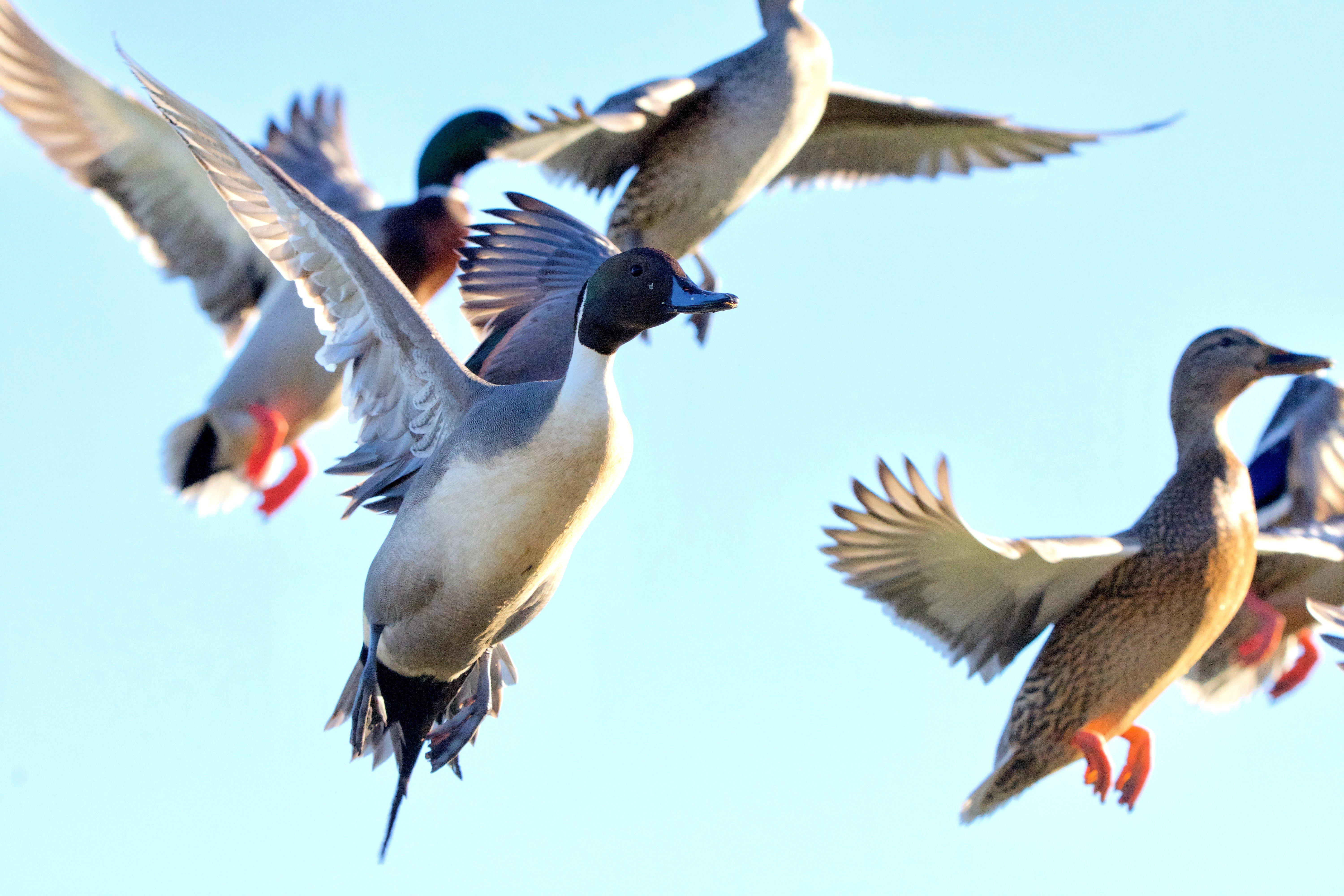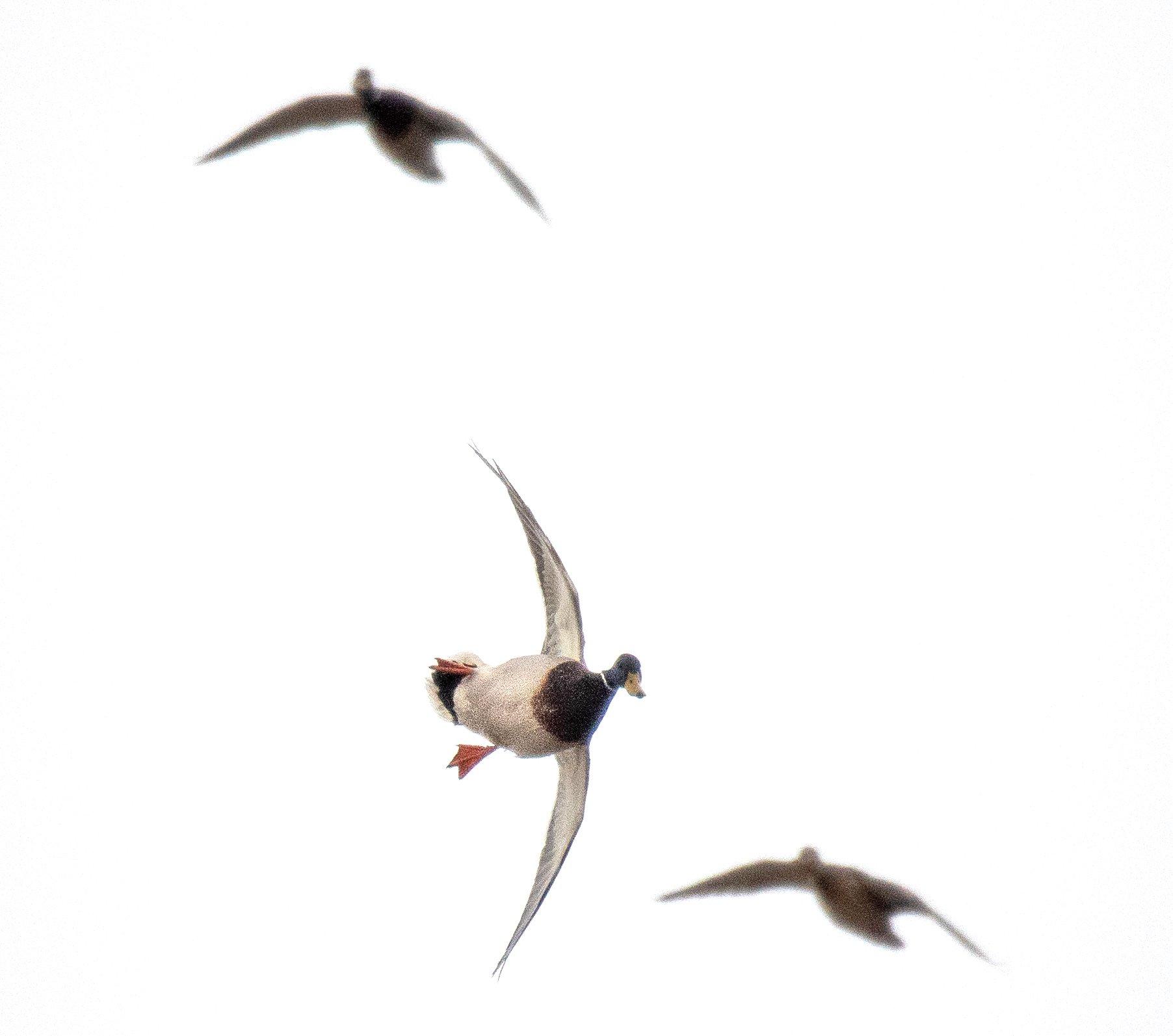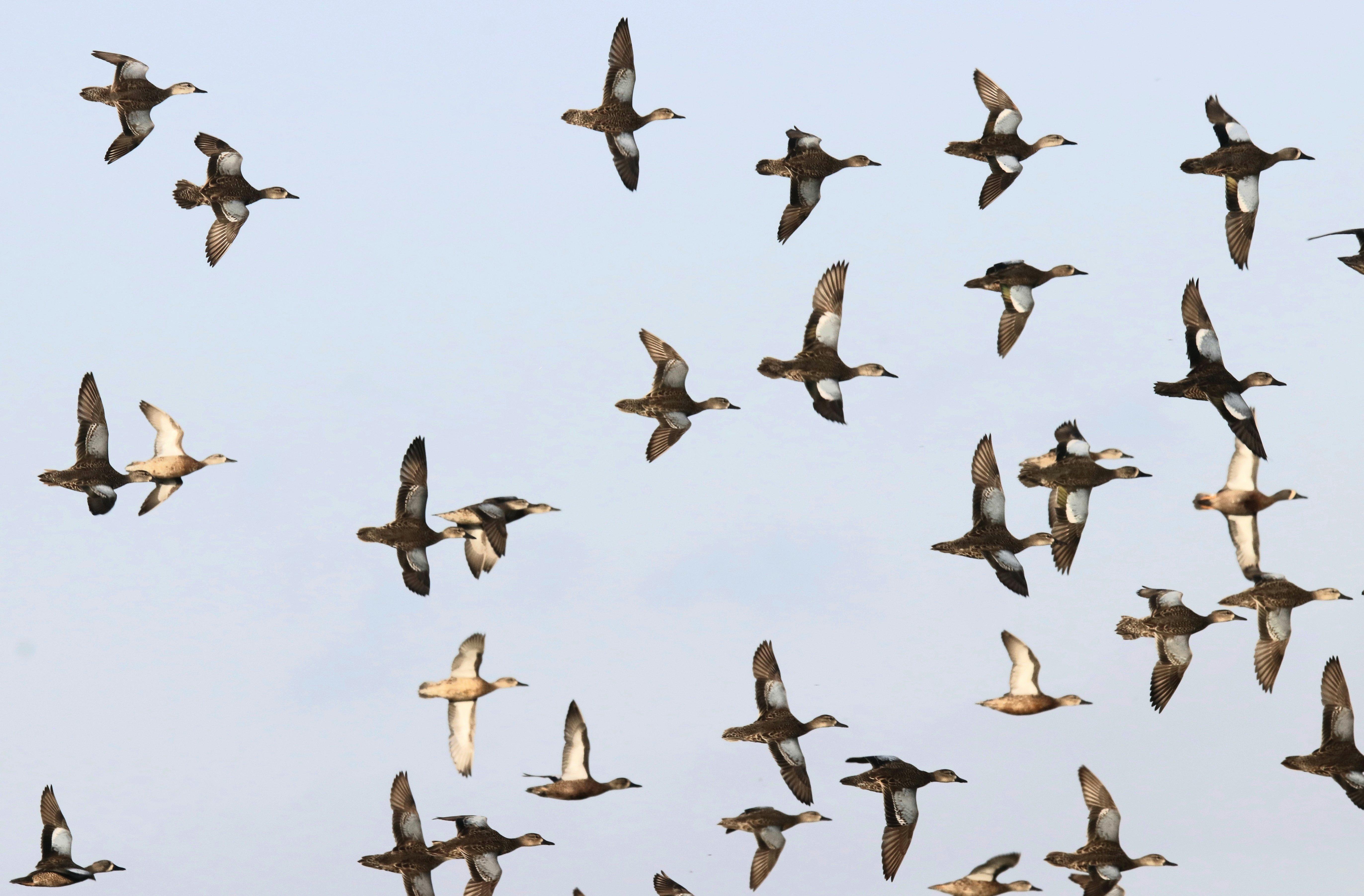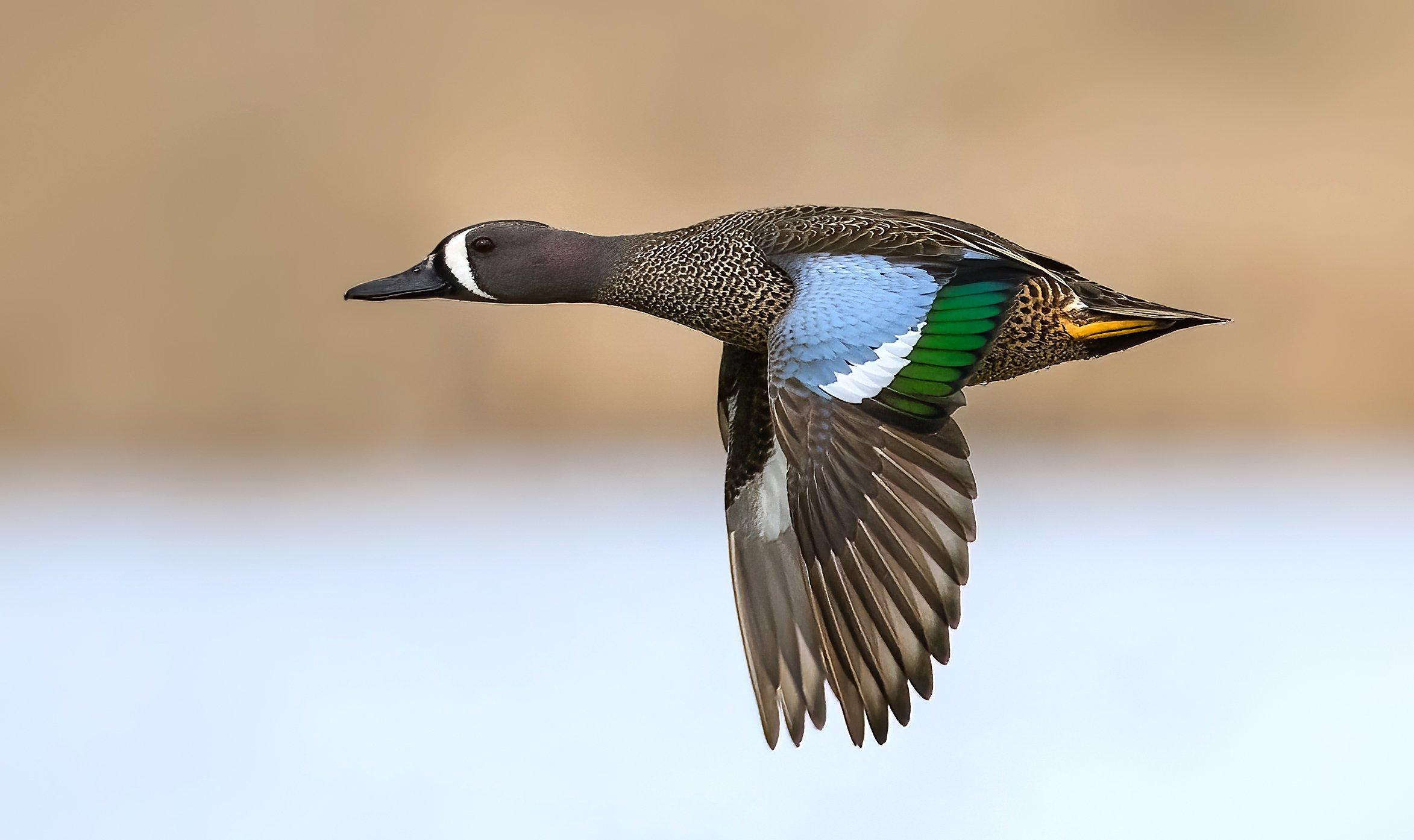Scientists have confirmed duck hunters’ complaints that birds don’t show up in many of the same spots nowadays. But why? And what can hunters do to ensure good waterfowling in the future?

Mallards and pintails might be the most sought-after ducks throughout North America, and their migration patterns are changing. Photo by Daniel Bruce Lacy.
You hear it in duck camps from Minnesota to Louisiana, and points east and west: Waterfowl migrations have shifted, and birds don’t winter at or pass through traditional hotspots anymore.
Some folks scoff at that notion, pointing out that every season differs, and that it’s tough to find consistency with something as fickle as migration. Others point to historical records that seem to back up claims of change.
The truth, however, seems to be more elusive. Are waterfowl migration routes and wintering areas changing? Yes, at least for some species, according to experts. But the trend is complex, and as with the nature of migration in general, many factors are at play.
Don’t Miss: Top Duck and Goose Calling Mistakes
THE DATA
Biologists across North America have researched waterfowl migration patterns and changes for years, and the resulting data paints a fairly clear picture.
“To cut to the end, wintering waterfowl distributions are changing,” said Heath Hagy, project leader with the U.S. Fish and Wildlife Service’s National Wildlife Refuge System. “But it’s complicated. They’re not all moving north or all moving west or all moving east. We see differences by species and by breeding population area, with some fairly significant shifts.”
As hunters might guess, many of the changes involve mallards in the Central and Mississippi flyways. People have long complained about “short-stopping,” when mallards winter farther north than they historically did. Some studies back that up.
“Both mallards and northern pintails showed evidence of short-stopping in the mid-continent flyways,” said a 2023 study published by the American Ornithological Society. “Indeed, the mallard and northern pintail distribution of band recovery data shifted 180 and 226 kilometers north, respectively, from 1960 to 2019.”
Hagy said the largest shift has occurred in the southern end of the historical mallard wintering range.
“For example, the northern extent of the wintering range in the Mississippi Flyway — the Missouri Bootheel for most of these birds, and other areas, such as western Kentucky — hasn’t moved very much northward, but the southern extent has really shifted northward,” he said. “It’s sort of more birds crammed in a smaller geographic area north to south. We see that southern Louisiana has really changed. Very few mallards go to southern Louisiana relative to several decades ago, but central Arkansas does not seem to have seen big changes proportionally.”
The changes aren’t limited to mallards. Hagy pointed out that various duck species — mallards compared to pintails and blue-winged teal, for example — react and migrate in different fashions. The migration patterns of those and other ducks might be changing but in other ways.
“If you look at something like pintail, we don’t see quite the same contraction at the southern end of the wintering range,” he said. “It looks like they have spread out. We don’t see some of the bigger concentrations that we historically saw in Louisiana. And it seems like they don’t stay in one wintering area for the whole winter.
“I actually think we have more blue-winged teal wintering in the U.S. than 50 years ago. That’s mostly a function of those birds wintering farther north, not going to South and Central America. Especially in Louisiana, Texas, Florida, and other states. In some cases, those birds have replaced some of the birds that no longer go there.”
Goose migration studies were among the first to document significant migration changes. A study published in 2023 in The Journal of Wildlife Management documented a two-stage shift in the distribution of winter band recoveries from mid-continent greater white-fronted geese — after the 1994-1995 season and again after the 2009-2010 season.
“Patterns in mid-winter waterfowl survey counts were consistent with changes in winter band recovery distributions, providing further support that mid-continent greater white‐fronted geese have shifted their core winter distribution nearly 750 kilometers northeast over the last five decades, from the Gulf Coastal Plain to the Mississippi Alluvial Valley,” researchers wrote in the study’s abstract.
Don’t Miss: Match the Hatch for Field Ducks and Geese
Hagy said similar changes have occurred more slowly with ducks, but those shifts are gaining speed. “Generally, what we’ve seen is there have been some subtle changes over the last 60 years, but the speed of the changes has really increased in the last 20 years,” he said. “So we see more change in the last 20 years than we’ve seen in those previous 40. That’s a mallard-centric perspective.”
And what about rumors that some ducks have shifted flyways, such as abandoning parts of the Mississippi Flyway for the Central Flyway? Actually, most research doesn’t support that.
“There’s some of that going on, but I don’t think that’s the driver,” said Michael Schummer, senior research associate and Roosevelt waterfowl ecologist with the State University of New York College of Environmental Science and Forestry, and creator of the FowlWeather Podcast. “I don’t think switching flyways is a big thing.”
So we know that many duck migration patterns have changed through time. The question is why. Biologists say the culprits might be right under our collective nose.

Mallards with access to harvested grain and open water often don’t migrate until weather forces them out. And that’s becoming less common. Photo by Forrest Carpenter.
THE REASONS
Climate change is probably the biggest catalyst for recent duck migration shifts. That might not be a politically popular reason for some, but scientists say it’s indisputable.
“It’s happening,” Schummer said. “I feel like people just want to deny that it’s getting warmer and ducks are staying north. The winters come later, and the springs come earlier. We just don’t have these long, steady winters.”
The Journal of Wildlife Management study backed that up. “(The) results provide empirical evidence supporting climate‐influenced winter range changes by important game duck species and suggest challenges and opportunities for waterfowl population, habitat, and hunting management in North America and the northern hemisphere,” the study’s abstract said.
As hunters might surmise, those changes might most affect ducks that feed heavily on waste grain, such as mallards. After all, if some roosting water remains open and there’s abundant food on the landscape that isn’t covered by snow, mallards have little reason to go south, preferring instead to stay as close as possible to their breeding grounds.
“If you’re going to eat at Bubba’s Steakhouse, you’re not going to drive past one in Illinois to eat at one in Arkansas,” said Pat Pitt, who began duck hunting in 1963 and founded the historic L’Anguille Lounge Duck Club in northeastern Arkansas. “They’ve got to where they’re dry feeding, as long as they have open water they can go back to and don’t have snow cover, and they’re not going to come down here.”
Schummer pointed to a recent hunt he took in northern Ohio, where he observed abundant flooded corn. “Just the waste grain from harvested (fields) in northern latitudes right now can feed the continental duck population five times over for like 100 days,” he said. “If that freezes solid, they go south. But the weather just hasn’t gotten bad enough to push ducks south.”
Changes in agricultural practices — perhaps influenced by climate change — likely also play a role, Hagy said. The northward movement of corn and rice agriculture are examples. The expansion of mid-continent reservoirs, such as power-plant lakes, could also play a role, as they provide open roosting and loafing water for ducks.
Still other issues enter the mix, especially concerning mallards. Schummer and Hagy said mallard populations from the Great Lakes’ breeding birds to the Atlantic Flyway have seen a proliferation of game-farm mallard genes, likely introduced by released mallards. And the problem is worse the farther east you go. The trend likely affects hunters from the Tennessee River Valley to northern Alabama and the Carolinas.
“If you shoot a mallard in the Atlantic flyway, there’s a 98 percent chance it’s not a pure wild mallard,” Schummer said. “They’re mixed with game farm birds. Behaviorally, those birds have no genetic drive to go to their ancestral wintering grounds in the lower Mississippi Alluvial Valley. They just kind of bounce around, wherever they can find food. They don’t go south all the time and end up in all kinds of weird places. They’re not genetically programmed to do that migration. We think that’s what’s driving the Eastern mallard population down.”

Hunters have long believed that hunting pressure affects duck distribution, and some science backs that up. Photo by Delbert Penner.
Changes in breeding ground habitat and overall duck abundance also contribute. If production is down in a specific region, that results in a lower overall flight, even at historic wintering areas.
“The loss of grasslands in prairie Canada and other areas have made some areas less productive, so a smaller percentage of the population migrates from prairie Canada to the U.S. and may change where birds end up based on where their breeding areas are,” Hagy said.
“We have very different population sizes year to year or decade to decade. If you follow the annual population surveys, we are down significantly from where we were a decade ago. Proportionally, we haven’t seen huge changes, but in areas where we have seen changes, it’s exacerbated by fewer ducks than were in that population a few years ago. It can seem bad when populations come down off some of those historic highs, which we had 15 to 20 years ago.”
Finally, another human element might affect duck distribution and abundance at wintering areas: hunting pressure, which, despite a steady decline in overall waterfowl hunter numbers, seems to be intensifying in some places. A 2023 study published in Ecology and Evolution indicated that photoperiod, weather and favorable winds usually influenced initial migration events, but contact with hunters seemed to spur follow-up movements.
“Subsequent migration movements also were 2.0 times more likely to occur on weekend days, indicating disturbance from humans may influence movements,” the study’s abstract said.
THE FUTURE AND REVISED PERSPECTIVE
Of course, all those studies and observations prompt another question: What can duck hunters do about this? Spoiler alert: Not much.
“No, there’s probably not a lot we can really do about it, unfortunately,” Hagy said. “We can continue habitat improvement efforts, whether through easement programs or policy, to continue initiatives that are good for waterfowl. But in the short term, there won’t be enough management or policy changes to greatly change the distribution of waterfowl. That’s probably driven by factors well beyond our control.”
Schummer said continuing climate change will likely cause varying migration patterns some years, and hunters will have to accept that.
“The next 50 years, as we warm, we’ll get weather whiplash,” he said. “We’ll have really cold years or really warm years. That doesn’t mean you won’t get cold outbreaks in October and November to send ducks south. It’s become more volatile, with extreme kinds of cold events and warm events that can happen. The planet wants equilibrium. But even with a warming planet, you can still have some really good duck hunting years.”

Biologists believe more blue-winged teal are wintering in the United States nowadays. Photo by FotoRequest.
Perhaps that’s the silver-lining amid the bad news. Duck hunting isn’t dying. It’s just changing. And hunters will be much happier if they learn to roll with those seemingly disturbing changes.
“That’s super important,” Hagy said. “If you still have birds, enjoy what you have. It might be sad to you if you’re in some geography in the far South that you don’t have as many mallards as you used to, but you might have more gadwall, blue-winged teal, and northern shovelers than you used to.”
Schummer concurred, pointing out the situation is not all doom and gloom. “When you look at the harvest numbers for Arkansas and Louisiana, they’re still shooting more ducks than any other place,” he said. “I think people just have to work harder for it. [The changes are] more about mallards than anything. Shovelers, gadwall, wigeon, green-winged teal, pintails, and other ducks are still getting there. I think people are upset that the mallard shooting isn’t what it used to be. But if the mallards aren’t coming, you might as well go duck hunting and enjoy it.”
Based on the trends, it seems that waterfowl migrations and duck hunting might never again resemble what they were in the heyday remembered by some hunters. And it seems probable that changes will continue. But as long as hunters still thrill to open skies, wet retrievers and whistling wings, the tradition will continue — even in a form we couldn’t have envisioned decades ago.
Don’t Miss: What Makes a Good Duck or Goose Decoy?












